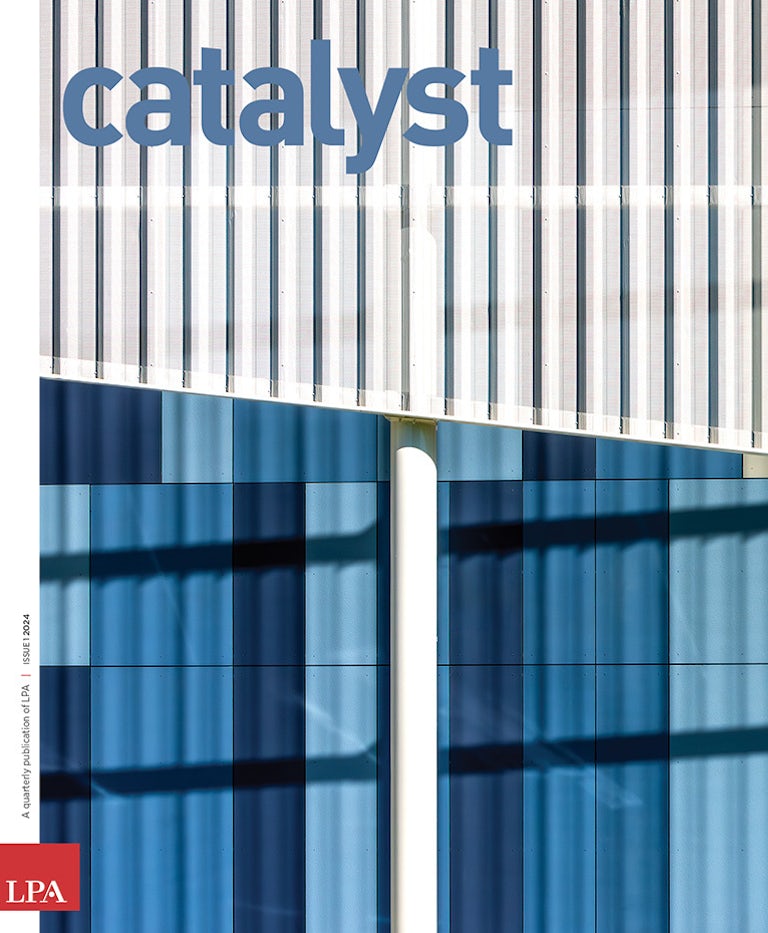For Executive Director Ellen Pais, the design process for the new Pretend City children’s museum is an opportunity to engage partners and develop a community hub for early childhood development.
On her LinkedIn page, Ellen Pais describes herself as “head cheerleader and advocate for a child-, family-and employee-centered world.” As executive director for Pretend City, a children’s museum in Irvine, California, she is working with educators and local leaders to develop a new facility focused on providing real-world experiences to help young children develop essential foundational learning skills.
In an interview with Catalyst, she talked about finding the right partners, balancing priorities and creating a “model [for] the community that we want to see.”
What advice would you give someone launching a nonprofit museum in this environment?
It’s scary to take on the responsibility of this visionary project, which will grow our capacity to serve the community, will grow our annual operating budget and requires a significant capital investment. But the goal of what we are trying to do is so important. For a mission-driven organization with an amazing and committed board, the outcome is worth the challenge.
What have you learned in terms of matching your budget and your mission?
A lot of people do not understand that nonprofits are businesses. We are just a very mission-driven business, and like everyone we have to pay attention to our bottom line. When we embarked on this project, we had a business consulting firm help us understand the economics of children’s museums and the opportunity for growth in the community. In making decisions, we’re trying to be wise about securing our future, but not overreaching so far that we’re putting the organization in financial jeopardy.
How do you find the right partners?
I’m lucky. I come out of the community school movement, so I’m a big proponent of aligning community resources for the benefit of families and children. I think of Pretend City as a place where, if we get it right, we can model how to align the resources that exist in a community for the benefit of our mission, supporting the development of all young children. We have partners who work with us who support basic child development. We have partners who support children who may be developing atypically or who may have developmental delays or disabilities. And then we have partners who work with us because we all want to inspire young people to understand the real world that they live in and to see themselves as an adult working in some aspect of the community. And we do all of this by engaging children and their caregivers in playful learning, modeling best practices, offering programing and sharing community resources! We want people to see Pretend City as the community’s hub for early childhood development.
How might your philosophy about creating a museum, even for early childhood, be different than, say, 10 years ago?
People are finally understanding the import-ance of play and are seeking out spaces like Pretend City to get away from screens and engage in playful learning. Because there are so few places in Southern California where this can happen, we have an increased opportunity and responsibility to build a large enough facility that we don’t have to limit attendance and turn people away … a problem we have now.
We also are very intentional about inclusivity, DEAI [Diversity, Equity, Accessibility and Inclusion] and being a welcoming environment. Part of being a welcoming environment is being a place where people see themselves and learn about others. We want to make sure that we have the diversity of experiences and partnerships here that reflect the larger community.
Finally, we are committed to maximizing the usefulness of our new facility, above and beyond being a children’s museum. To that end, we are partnered with organizations that can deliver services in a nonclinical setting, organizations that can teach career pathways and financial literacy in a real (pretend) city and train educators, service providers and parents in early learning and child development. And with a full-service restaurant on site, we can let people linger and enjoy a meal together.
What are institutions missing in this process?
We have an opportunity to model the community that we want to see. What is that bigger legacy that we want to articulate? Whether it’s about a building that’s sustainable or a welcoming place or a building that wants to make a statement, it’s really thinking about the role we want to play in the larger community that’s bigger than our organizational mission at the moment. And how do we find all those little pockets of resources to help make that dream come true?
What do you like about the design process for the facility?
First off, I’m a nerd. One of the things that is really wonderful is the opportunity to be reflective about what matters and how you can have impact. I really appreciate that we’re having those conversations as opposed to just saying “I want orange walls.” It’s really about, why do you want that wall? What is the right workspace for all the different functions within your organization? What are the ways that we can really think about our space that serve issues around safety and learning? You don’t get to have those kinds of conversations that often.






